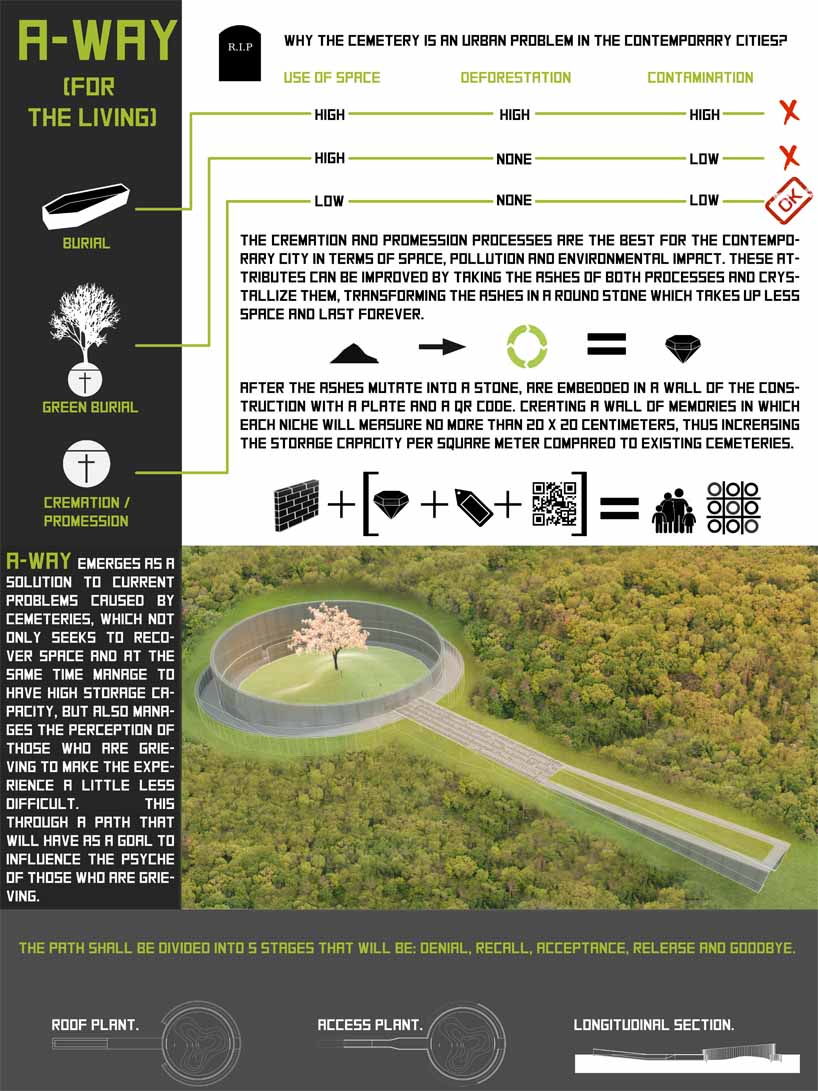
A.way by A.A.R.P. from venezuela
designer's own words:
a.way emerges as an alternative solution to today's cemeteries, trying not only to solve the space problems, polution and deforestation but also the psychological treatment given to those who are in mourning in such places.
to achieve this, the project is divided into two parts: on one hand we have the urban aspect, which comprises everything related to the city, the environment and the problematic of space and then we have the psychological aspect, which comprises everything related with the user, his psyche and brain.
Let's begin then by the urban aspect, understanding that cemeteries are a large-scale urban problem in contemporary cities, mainly because they can be accused of being a "space eaters", this means that every time a cemetery need to expand their physical limits, it will make through deforestation and after that, the soil used for burials is contaminated and may not be used for other things. another important feature is the way in which the graves are arranged, each has an area of two meters square and 2 deep, therefore the amount of space needed to bury many people is extremely high.
after carefully studying each of the forms of burial, I found that cremation is the most suitable in terms of space saving, pollution and deforestation. is necessary to know that these characteristics can be improved by the crystallization of the ashes from the cremation, so the dimension of the jar in which the ashes are stored is reduced to the size of a stone that fits in the hand, plus that the duration of crystallized stone is quite high, close to the duration of a diamond.
Thanks to these improvements in the process of cremation will be able to save part of the space for cemeteries because there will be no bodies to bury, therefore deforestation will decrease as well as soil contamination.
continue with the analysis of the psychological aspects, as these are what give life to the project itself.
when a human being is a victim of the loss of a loved one or someone close, his psyche tends to undergo changes or mutations that occur gradually during the period known as mourning. these changes can be agglomerated into five basic stages: denial, recall, acceptance, release and goodbye. these stages are created by the brain and function as a self-healing mechanism, which is slowly piecing together the fragments in which the psyche is divided at the time of a loss.
the intention is to reinterpret these stages and implant them on a route that will have the purpose of facilitating the grieving process and recomposition of the psyche of those who are grieving. to achieve this I had to thoroughly study each of the stages, their characteristics, how they work, etc..
as was to be expected each of these stages has unique features and are stimulated by different situations, therefore each one work differently and separately, but at the same time as an agrupacion of elements that have the same purpose.
as was to be expected each of these stages has unique features and are stimulated by different situations, therefore each one work differently and separately, but at the same time as an agrupacion of elements that have the same purpose.
Finally, and after much research and results, succeeds in creating an item that despite being different in each of its parts work as a group with a purpose in common: to facilitate the reconstructive process psyche of those who are of mourning. this by sensory stimuli of different features at each stage of the journey, also achieving a high capacity storage in a small space without causing major damage in terms of pollution and deforestation.
“What we have done for ourselves alone dies with us; what we have done for others and the world remains and is inmortal.”
Albert Pike
Project Explanation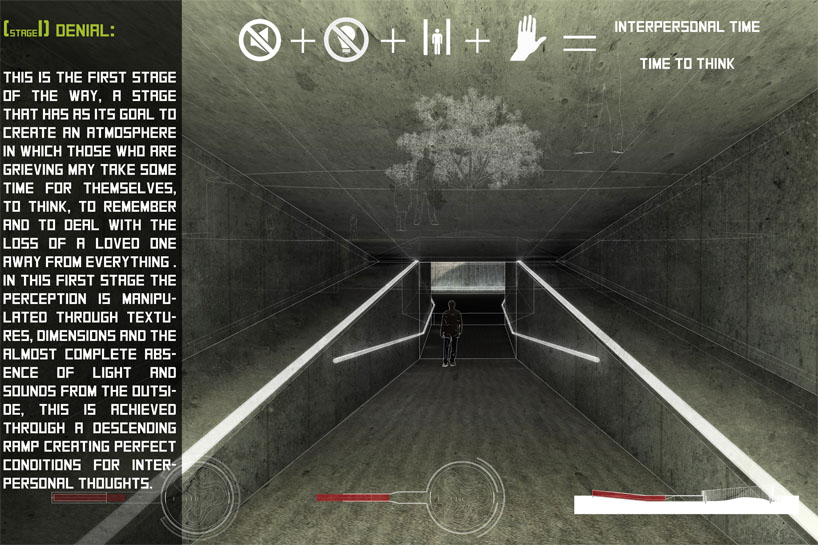
Stage 01: Denial.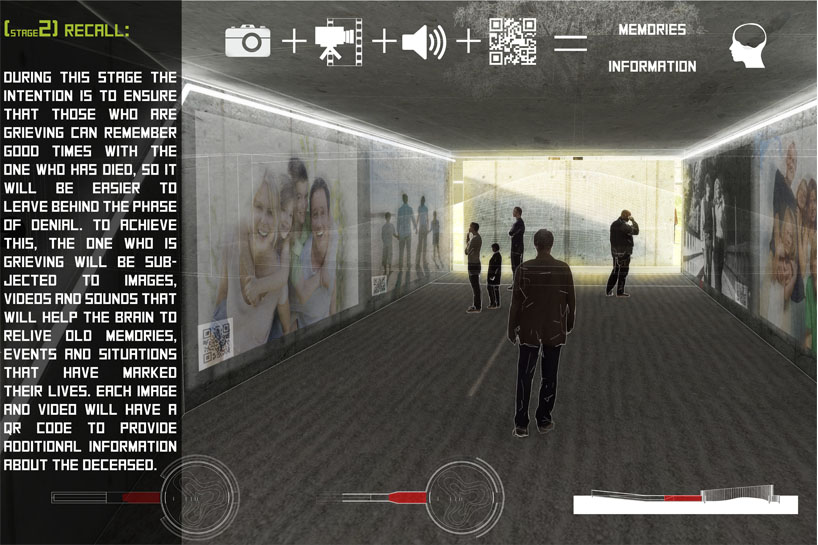
Stage 02: Recall.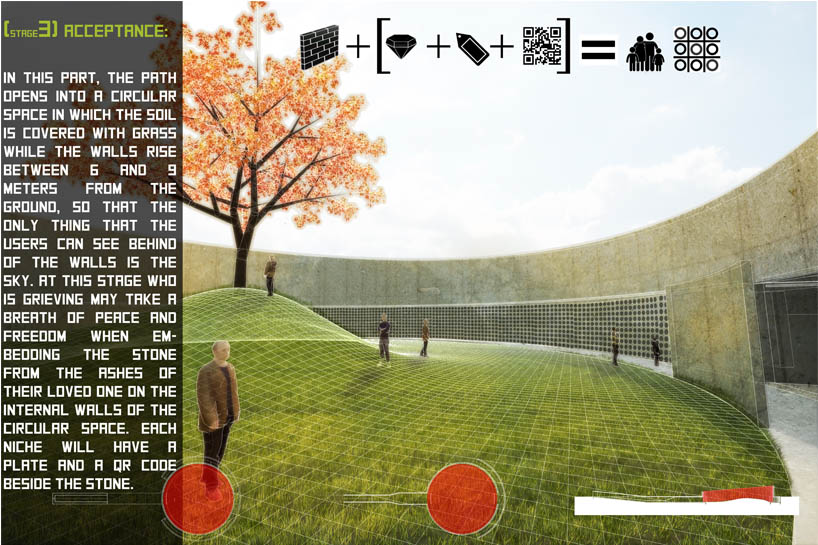
Stage 03: Acceptance.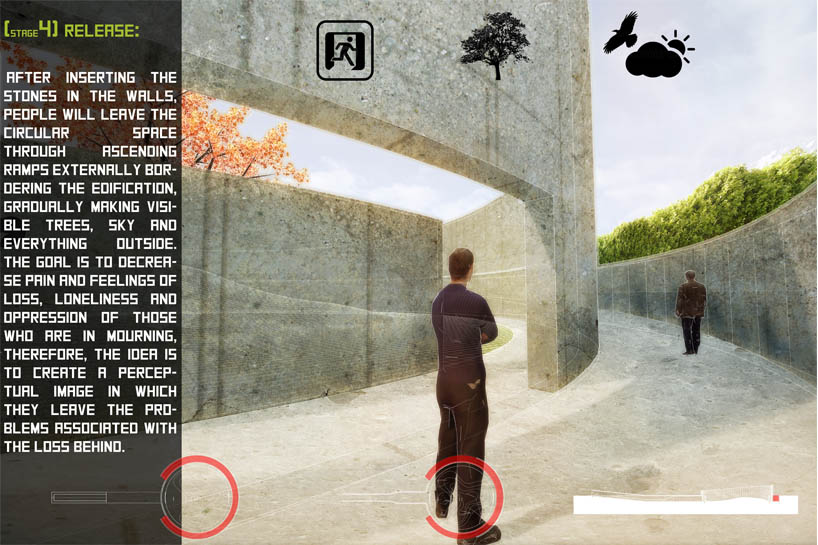
Stage 04: Release.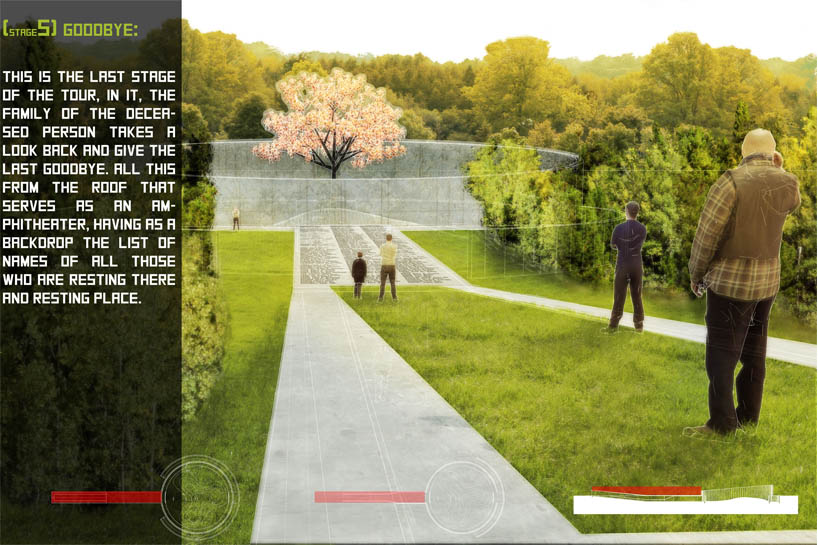
Stage 05: Goodbye